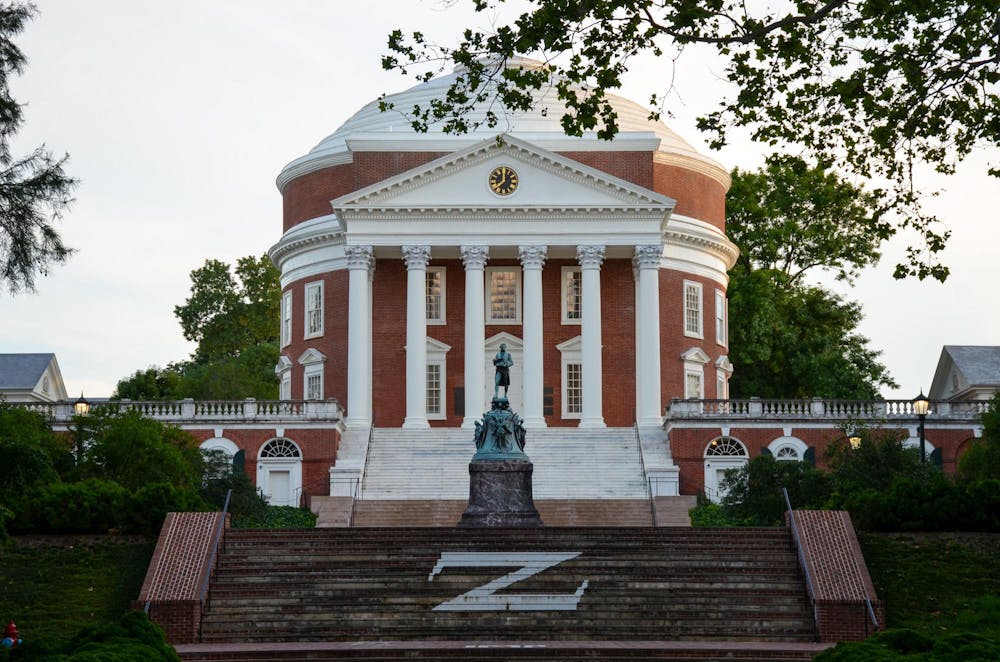The United Campus Workers of the University’s faculty committee published an article in The Cavalier Daily Aug. 26. There are innumerable items to debate in the UCWVA-UVA editorial, which is rife with inaccuracies and misrepresentations. I will focus on one very key topic that gets short shrift, and which they clearly either do not understand or are grossly misrepresenting — the prohibitive cost of a University education for the middle class. UCWVA-UVA says, “The University is ranked first for financial aid among public universities — it is one of only two public universities that fully meet all demonstrated financial need … Does this sound like a University in crisis?"
That’s a total obfuscation of the facts. AccessUVA takes care of poor and lower middle class families, which is both admirable and necessary, but is focused solely on in-state Virginia undergraduate students. Below are the key summary points:
- Applicants with family incomes under $50,000 get free tuition, room and board, and fees are waived
- Applicants with family incomes between $50-100,000 get free tuition, and fees are waived
- Applicants with family incomes between $100-150,000 get $2,000
However, I would ask about middle-class families with incomes over $150,000. They get nothing. The cost of a University education must become a primary focus of the new University administration. This can only be addressed through a drastic reduction of the administrative expenses bloat that has accumulated at the University over the past few decades.
Below are summary data showing the cost of attendance, specifically for off-campus students, according to the US News & World Report top 50 ranked U.S. universities — universities that would be considered strong competitors for potential University students. This is particularly germane for out-of-state parents who are seeking an Ivy League quality education at a lower cost. They are considering state universities across the nation for the best combination of cost, educational quality and culture. We are losing qualified students whose families cannot or will not pay the large differential in the University’s educational expenses when they can attend other universities of comparable quality.
|
University Name |
US News & World Report Rankings |
Out-of-state cost of attendance |
In-state cost of attendance |
|
Princeton University |
#1 |
$90,730 |
N/A |
|
Harvard University |
#3 |
$86,925 |
N/A |
|
University of Michigan |
#21 |
$84,164-88,646 |
$38,548-40,850 |
|
University of Virginia |
#24 |
$81,718-85,946* |
$40,468-44,676* |
|
University of North Carolina |
#27 |
$65,520 |
$28,440 |
|
University of Florida |
#30 |
$48,700 |
$24,180 |
|
University of Texas |
#30 |
$64,040-$72,682 |
$32,344-35,152 |
|
Georgia Institute of Technology |
#33 |
$57,518 |
$34,034 |
|
University of Georgia |
#46 |
$51,468 |
$29,806 |
*The cost of attendance at the University increases by around $10,000 in the School of Engineering and Applied Sciences and the McIntire School of Commerce for third- and fourth-years.
Many University parents are pursuing a quality education from Southern universities for their children, seeking a refuge from the well-publicized chaos going on in the Ivy League and other elite universities. However, you will see from the chart above that U.Va. is 26 to 68 percent more expensive for out-of-state parents than other public, Southern universities cited in the U.S. News & World Report top 50 ranking.
In the real world of business, you do not price your core product 33 to 68 percent more than your competitors if you want to increase your quality customer base. The University needs to address its tuition price, since only the top five percent of American families can afford to pay our total cost of attendance. One-third of the University’s student body is comprised of out-of-state students, more than any other top-ranked U.S. state university. Our 33 percent out-of-state student body representation, mandated by law for all of Virginia’s state universities, provides geographic diversity and engenders the “private university” environment that distinguishes our alma mater from its top-rated state university competitors.
There is no longer any economic diversity at the University. Many blue-collar and “average” white-collar, middle-class, two-parent family incomes earn in excess of $100,000. In today’s America, that no longer qualifies as “rich.” If you’re an out-of-state family, you could not afford to have your son or daughter attend the University unless your family income is at least $250,000, assuming you have a mortgage, desire to save for retirement or are not the beneficiaries of a large family trust fund.
The new University president must aggressively address the bloated administrative overhead expenses. In the business world, if a new Board and CEO took over a private-sector company with a disproportionately high expense structure like the University that was losing key customers to quality competitors, they would aggressively eliminate fixed expenses in order to reduce their core product pricing. That’s how you gain market share and attract high quality customers. Ditto to the University and our tuition costs.
If this is not done, the University will continue to be affordable by only lower-income families via AccessUVA scholarships or wealthy families for whom $86,000-96,000 a year in college costs is a rounding error. We will lose our potential “high quality customer,” middle-class students to the University of North Carolina, Georgia Tech, University of Florida, University of Texas, University of Georgia and other state universities who care about economic diversity.
The lack of economic diversity at the University was not Mr. Jefferson’s vision, nor should it be the strategic goal of the new president’s administration.
Thomas M. Neale is a Class of 1974 College alumnus and the father of two alumnae daughters. He can be reached at opinion@cavalierdaily.com.
The opinions expressed in this guest letter are not necessarily those of The Cavalier Daily. The guest letter represents the views of the columnist alone.







